Class began with you each noting your “tech firsts”—
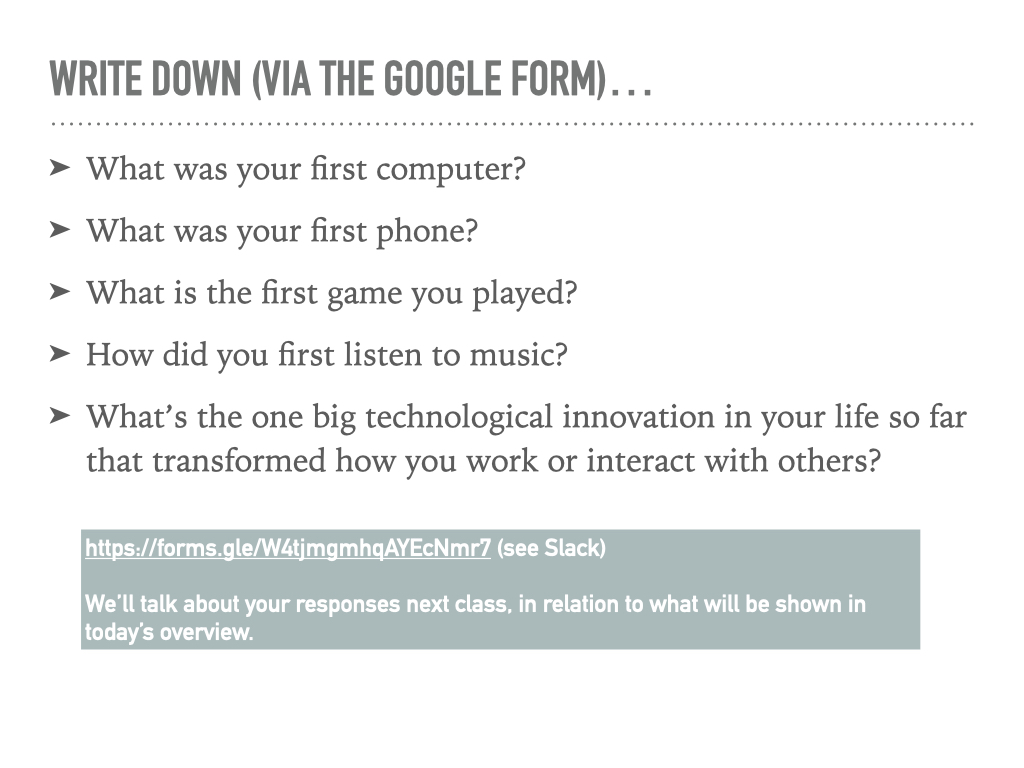
I began the historical overview with a slide featuring the gigantic Electronic Numerical Integrator and Calculator (ENIAC), the first programmable general-purpose electronic digital computer, built during WWII by the U.S.—

Then I went back in time to the early 1800s with the invention of the Jacquard Loom, which was controlled by “punch cards” laced together into a continuous sequence (thus paving the way for early computer technology)—

For Charles Babbage’s 1837 Analytical Engine (a steam-driven calculation machine which incorporated an arithmetic logic unit, control flow in the form of conditional branching and loops, and integrated memory), Ada Lovelace came up with the first published computer algorithm—
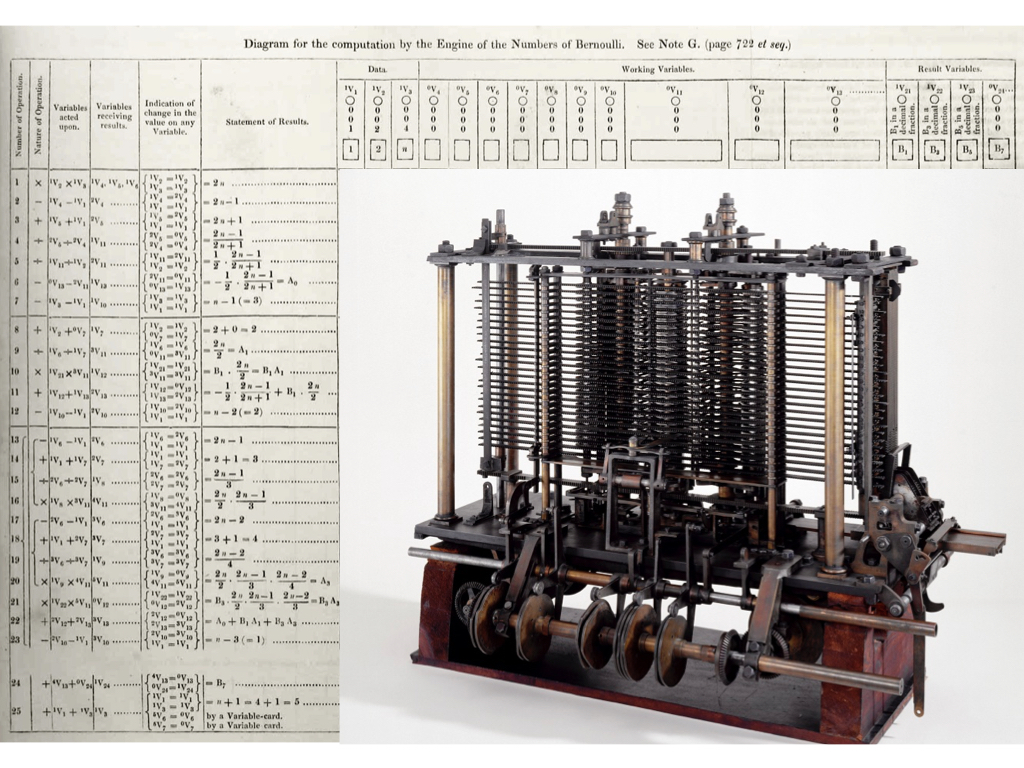
In 1936, Alan Turing published a paper on his “universal computing machine” and in 1943, the BOMBE, a large electro-mechanical encryption machine was created—
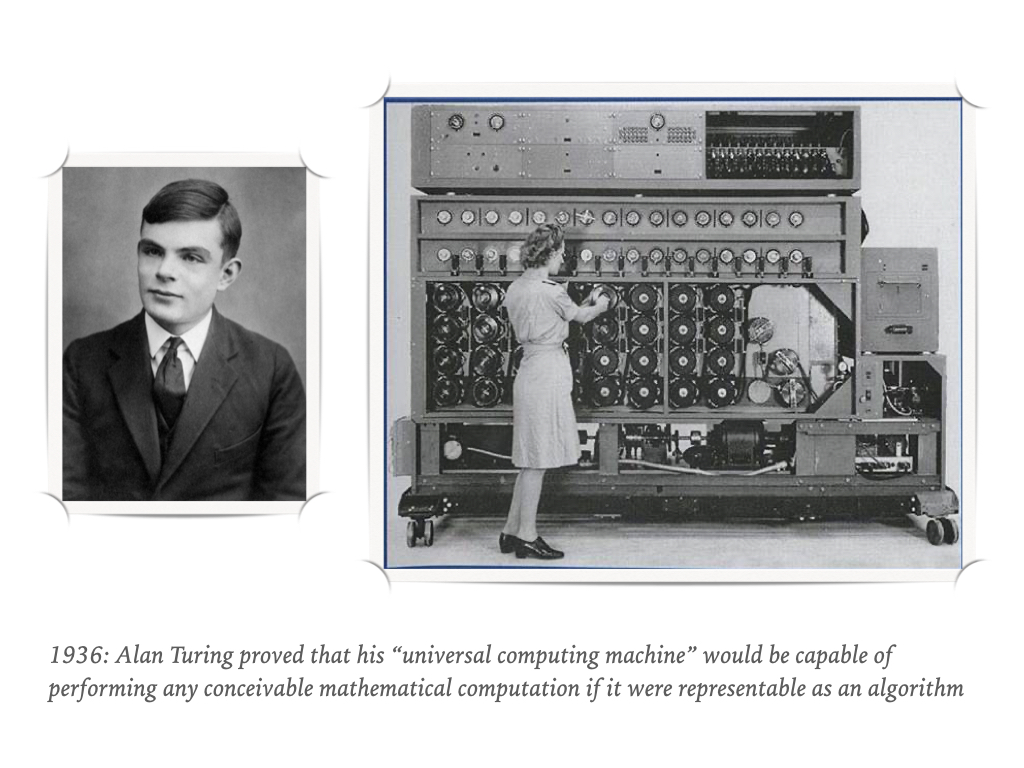
Austrian actress Hedy Lamarr became a pioneer in the field of wireless communications by developing a “Secret Communications System” to help combat the Nazis in World War II. “By manipulating radio frequencies at irregular intervals between transmission and reception, the invention formed an unbreakable code to prevent classified messages from being intercepted by enemy personnel.” This was commonly referred to as “frequency hopping“—
In 1946, the Census Bureau funded the creation of the UNIVAC, the first commercial computer for business and government applications—
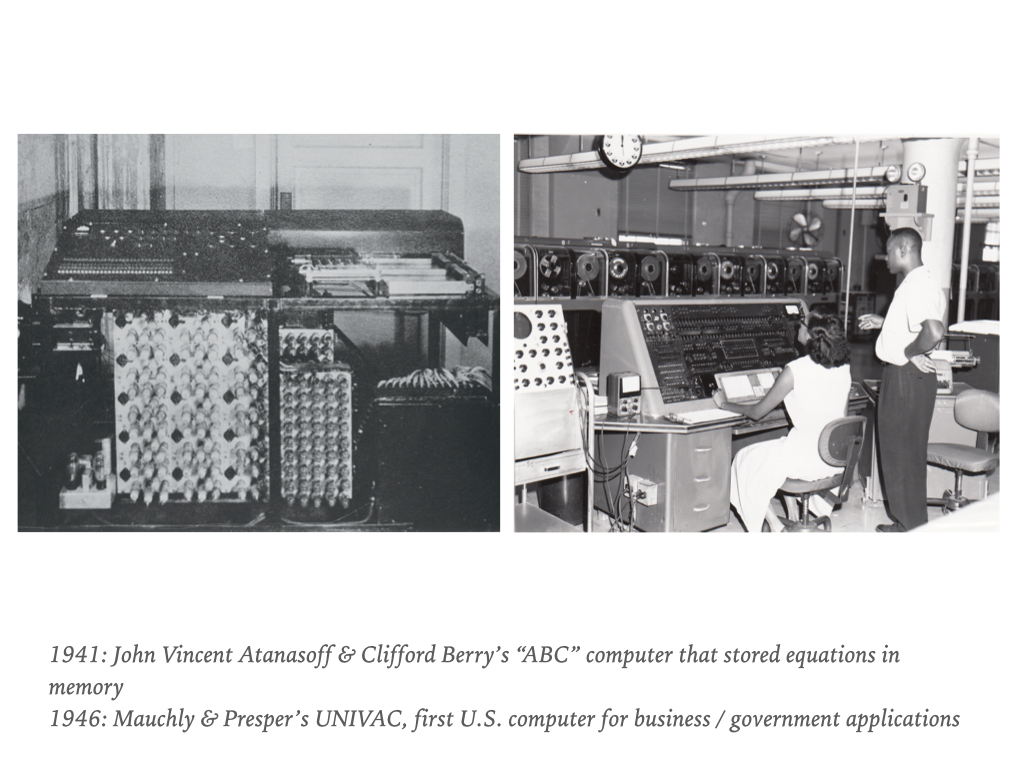
In 1949, Grace Hopper became an employee of the Eckert–Mauchly Computer Corporation as a senior mathematician and joined the team developing the UNIVAC. In 1953, Hopper developed the first computer language, which eventually became known as COBOL. She also discovered an unusual glitch one day, which turned out to be a moth stuck in the hardware, and ended up coining the term “de-bugging” for solving this—
In the 1950s, IBM developed the FORTRAN language, used for computationally intensive areas such as the analysis of scientific data, computational physics, etc.. Dorothy Vaughan, who worked at NACA (now NASA) taught herself this language and became the first African-American woman to supervise a group of staff there—
In 1967, the Star Trek sci-fi television series debuted, which envisioned all kinds of possible futuristic technologies—
The “Tricorder” was one device from the series that framed a major design challenge—
In 1968, Bell Labs was experimenting with technologies that laid the groundwork for GUIs, text-to-speech, electronic music, 3D visualizations, computer graphics/animation, and much more—
In 1972, Atari’s PONG game revolutionized the arcade industry—
An entrepreneur in California, Nolan Bushnell, hired engineer Al Alcorn to design a car-driving game, which was deemed too ambitious. So after testing a version of Ping Pong in bars, PONG was released by Atari in 1972, which revolutionized the arcade industry and essentially launched the modern video game era—
In 1976, Steve Wozniak designed the Apple-1, a single-board computer for hobbyists—
In 1984, the Commodore 64 came on the market—
In 1983, Apple’s Lisa becomes the first personal computer with a GUI, featuring a drop-down menu and icons—
In 1984, Apple’s “1984” commercial to promote the Macintosh computer, which was directed by Ridley Scott and cost over $300k, aired during Super Bowl XVIII—
In 1992, Microsoft releases Windows 3.1—
In 1996, Motorola released StarTAC, the first clamshell (flip) mobile phone—
In 1998, Apple, once again led by Steve Jobs, released the Bondi Blue iMac, which sold for $1,300—
In 2000, The Sims game was launched, which gave players a simulation experience akin to real life (customizing how you look, creating a home, getting a job, forming relationships with others). It even came with its own artificial language called Simlish. Women accounted for more than 60% of players—
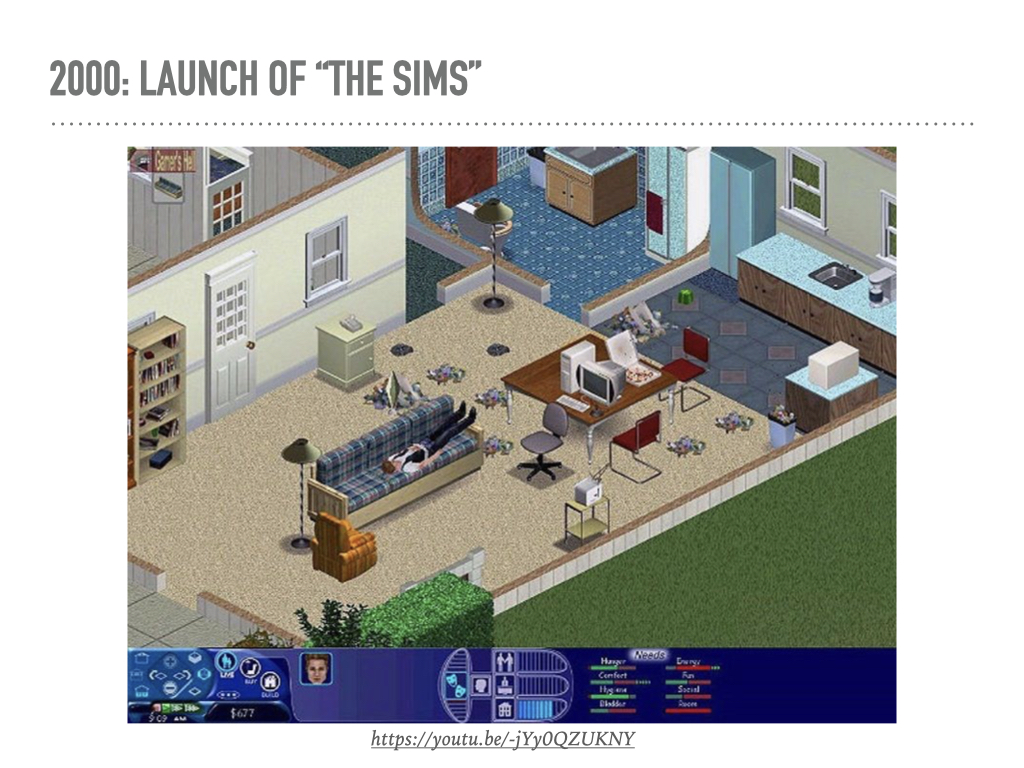
In 2002, the The Earth Simulator, created by the Japanese Government to create global climate models, was listed as the fastest supercomputer in the world from 2002 to 2004—
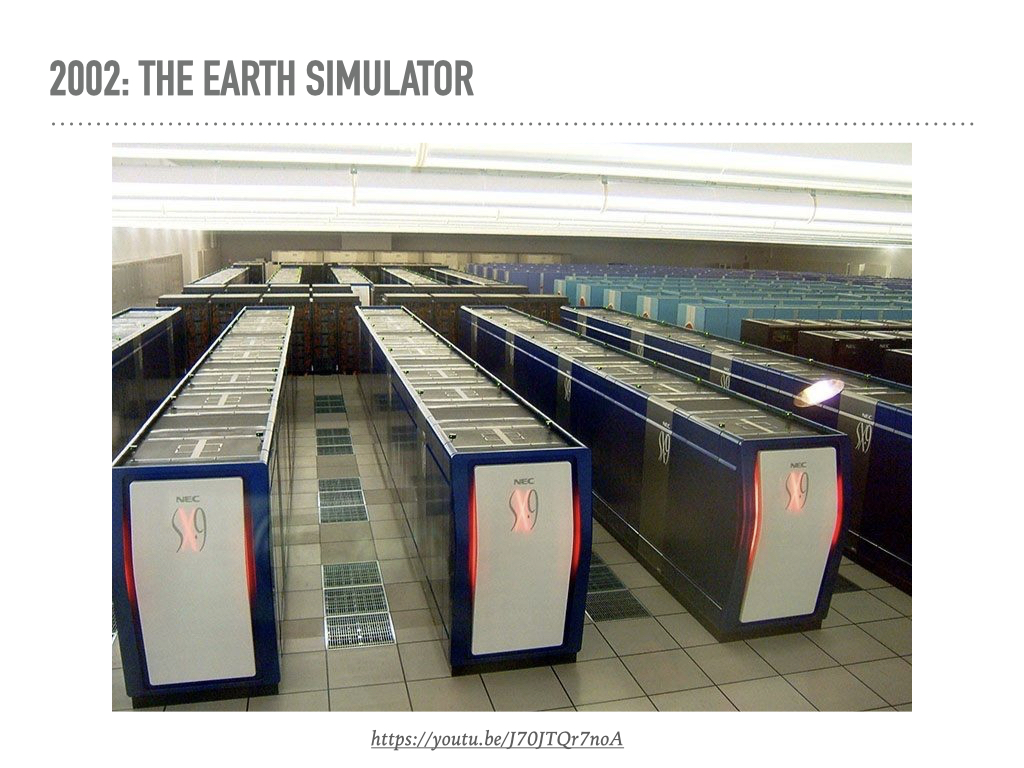
In 2007, Apple launched the iPhone, and note how it was promoted (Ryan, feel free to post a comment regarding what you mentioned in class)—
In 2010, Angry Birds became the top-selling mobile game—
Class ended with a look towards the future (the video for this is included in the “Class 3” notes)—
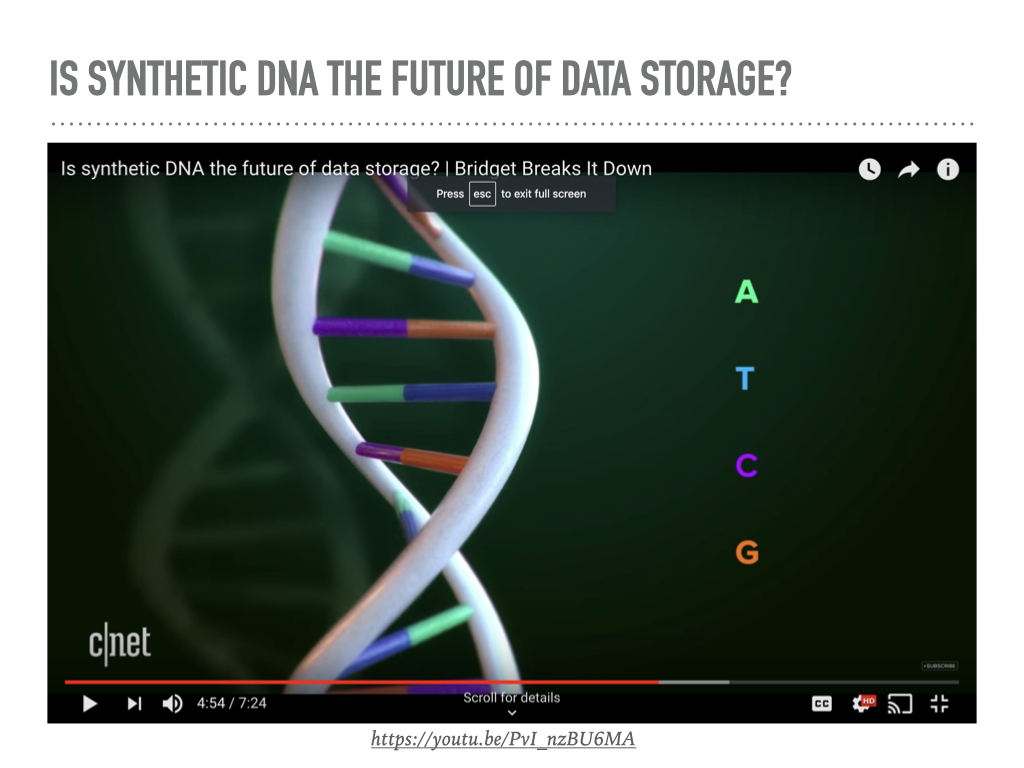




Leave a Reply